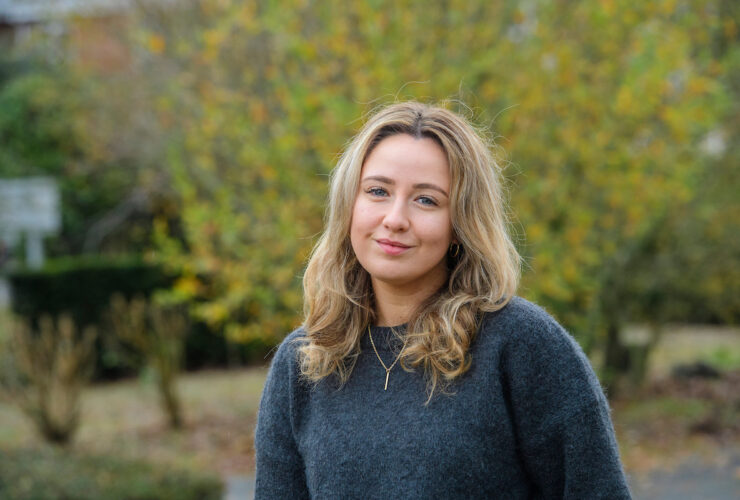If ‘strong organic engagement’ was a Pokemon, it would be Mew. If ‘viral content’ was a Pokemon, it would be MewTwo.
What makes these things so rare that we’re comparing them to Pokemon, you ask? Well, much like any other digital platform that has organic reach versus paid reach, there’s a super secret algorithm. And this super secret formula is the key to getting the same (if not better) reach than if you paid for it. So of course, the competition for these Pokemon is pretty steep.
However, that’s exactly how platforms like Google and Facebook make their revenue – ad spend. The harder it is for you to reach your audience organically, the more inclined you are to spend money on advertising.
So what kind of organic posts actually perform well? Posts that produce high organic engagement on LinkedIn typically follow the Facebook format, despite the hard line people like to draw between the two platforms. Despite having two separate social media accounts – people collect connections and ‘Followers’ much like Facebook, organic engagement is difficult but attainable, and outstanding posts can quickly become viral.
Virality is not strictly limited to other social platforms anymore. Some posts become viral. But what makes certain posts become viral? Much like other social platforms, quality content is essential. However it’s the engagement with said content that really launches a post into virality.
Read more to discover how to increase engagement on your own LinkedIn posts.
LinkedIn recently implemented post reactions similar to Facebook in order to provide more options for engagement. After painstakingly researching the engagement across their platform, they found that “Congratulations” is the most popular short comment, followed by reactions showing interest on posts that provided insight.
Not only were the reactions researched thoroughly, but the actual design of the reactions themselves were well thought-out. LinkedIn used surveys to figure out which symbols resonated the most with their audiences, narrowing down the best ideograms to five reactions: like, celebrate, love, insightful, and curious.
The idea that these ideograms could be cohesive, distinguishable, and usable throughout all cultures is all part of LinkedIn’s new approach to make the brand more personable, warm, and authentic.
Reactions are no longer limited to ‘like’ and ‘comment’ – they now have like, celebrate, love, insightful, and curious.
The most engaging posts do the following:
- Tell a story about an individual who has worked hard to overcome obstacles and usually concludes with a “moral of the story”, inspirational quote, or “shout-out”
- Challenge the status quo within an industry, or presents an “unpopular opinion” with a prompt to encourage comments such as “Don’t you agree?” or “Am I wrong?”
- Take a Facebook approach and shares a viral video that incorporates emerging technologies, innovative business ideas, and/or awe-inspiring attractions.
Even more tips to increase engagement on LinkedIn
Post content directly on LinkedIn. Yes, it’s all about directing people to your website, however if you want to be on LinkedIn’s good side, you’ll want to utilise this tool to the best of its ability. Why? You will receive organic visibility and LinkedIn will view you as a contributor. LinkedIn posts are indexed on Google and show up in organic search results – giving you even more opportunity for content exposure.
Encourage your employees to write about their roles, their most successful campaigns, perhaps their own challenges and achievements that tie into raising awareness for good causes.
Not everything you post has to be specifically work-related, but if you want to increase organic visibility, then you want to create a story people are interested in reading. Remember, while LinkedIn is similar to Facebook, it abides by a professional etiquette not found on other social platforms. Not sure what should make the cut? Read more about the rules of etiquette on LinkedIn here.
LinkedIn works best when you communicate with your connections. Building relationships and networking will benefit you and your business in the long run. Posting opportunities, asking for recommendations and acknowledging individuals in their field all make for fantastic posts. These posts can help you build your network and make you relatable to your followers.
LinkedIn is a great platform to escape to as it has managed to keep itself within the professional mindset. Many people describe LinkedIn as a ‘break from Facebook’ but there are a few who disagree with the sentiment, believing that LinkedIn is evolving into Facebook more and more every day.
One thing is for sure, LinkedIn is growing quickly and it’s not showing any signs of stopping. The best part is that it isn’t completely flooded with ads and incredibly invasive sponsored content…. yet. This will most likely change as time goes on, but for now – there isn’t the same level of targeting with LinkedIn ads as there is with Facebook, therefore you will still see sponsored advertising, but not to the annoying obtrusive level that you find on Facebook.
The greatest thing about LinkedIn is how you can network and find jobs. You can build your profile out much like a CV or resume while simultaneously showing the world how your day-to-day professional persona works. With that in mind, here are a few extra tips on how to make your LinkedIn profile really stand out to gain high engagement levels.
According to LinkedIn’s statistics, the “company is growing at more than two members per second, with member milestones across the globe”. LinkedIn has grown from 467 million users in the third quarter of 2016 to 590 million by the end of 2018, and continues to increase its potential in 2019.
LinkedIn isn’t overly complicated, but once you master this platform, you can literally change career paths or find your best new hire. LinkedIn’s job posting features offer businesses a range of opportunity to find their next employee quickly and efficiently.
If you haven’t tried LinkedIn before, now is the perfect time to start building your strategy. Especially if you are in the B2B industry.
LinkedIn has its share of influencers, but instead of ‘doing it for the aesthetic’ that you find on Instagram, you find LinkedIn does it ‘for the brand awareness’.
Remember, while these reactions may not seem like a big deal, engagement is. The new ability to communicate more solidly with your audience is a fantastic new insight into your own branding. Are followers resonating with certain posts over others? Are your videos receiving enough interaction to warrant the cost of producing them? Are you missing the mark completely and need to re-think your content strategy? The new reactions will help businesses answer these questions, and perhaps inspire a creative approach to your own LinkedIn presence.
While these post reactions are relatively new to LinkedIn, they differ from Facebook in the sense that users are unable to react to comments, for now… watch this space!



